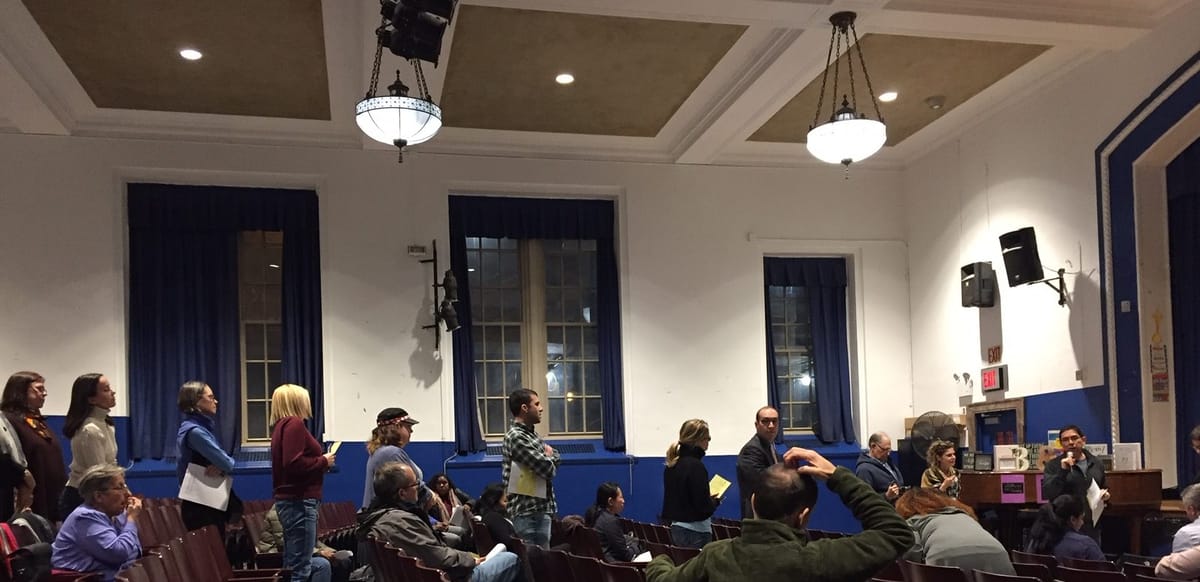For the first time, all parents can vote in Community Education Council elections. Here’s what that means.


By Reema Amin, Chalkbeat New York
Odds are, many public school parents don’t know who serves on their district’s Community Education Council.
That may change. Voting began on May 1 for these 36 parent-led committees.
These councils, which have the power to shape school zone boundaries but are otherwise largely advisory, tend to operate below the radar for a lot of families. Until now, just three parent association leaders from each school selected members for Community Education Councils, or CECs.
In this new election cycle, parents will have more of a say. For the first time, voting will be open to any parent or guardian of a child who attends a public school (excluding charters) in a particular district.
“This is an unprecedented opportunity for all parents to make their voices heard and have a direct hand in choosing the future representatives of our school communities,” Chancellor Meisha Porter said in a statement. “I encourage all parents and guardians to get involved and vote!”
As New York City transitioned from the Board of Education to mayoral control and a more centralized vision of running the nation’s largest school system, it dismantled each district’s Community School Board. Those school boards — which oversaw budget and policy decisions for the city’s 32 districts — were replaced in 2004 by the parent-led CECs, which are much more limited in power.
In 2019, when Mayor Bill de Blasio was lobbying the state legislature to extend mayoral control over the city school system, he was granted another three years on certain conditions, including boosting parent involvement. One way to do that, state lawmakers believed, was to expand voting for the councils to all parents and legal guardians.
CEC elections take place every other year, and already, interest in serving on these councils has jumped nearly 70% since 2019. A record 1,785 parents applied to serve this year, up nearly from 1,060 two years ago, according to education department data released Friday.
Here are three things to know before voting.
What is a Community Education Council?
New York City’s district schools are spread across 32 individual districts in the five boroughs. For each, there is an 11-member CEC. Nine members must be district school parents with children in pre-K through eighth grade, and two are appointees of the borough president, who can be residents or local business owners.
There are also citywide councils representing high schoolers, students learning English as a new language, students with disabilities, and District 75, which serves students with the most complex disabilities.
In New York City, the mayor retains control of the school system and ultimately steers policies that trickle down to classrooms, students, and teachers. Each CEC, however, is charged with approving rezoning changes and holding public hearings. For example, in 2016, when the city created a controversial and highly publicized rezoning plan aimed at easing overcrowding and boosting integration on the Upper West Side, all eyes were on the District 3 CEC, which spent more than a year debating the plans.
Sometimes CECs pass resolutions sharing their collective stance on policy matters that they have little power over. Last fall, for instance, a CEC in Queens took a vote of no confidence in Chancellor Richard Carranza over complaints of uneven communication and guidance during the coronavirus pandemic. Last June, amid a city and national debate about police in schools, the CEC in Brooklyn’s District 15 passed a resolution calling for reforms to how school safety agents operate.
The citywide councils are also responsible for drafting an annual report on how effective the city has been in providing services for the community that they represent.
Am I eligible to vote?
Any parent or legal guardian of a child attending an education department-run school can vote for the council representing their district. They can also vote for citywide councils if they have a child represented by that council.
Essentially, each parent gets one vote per child, which means bigger families have more of a say in terms of representation. Each vote allows you to choose up to three seats on the council. Additionally, parents can vote for members on a citywide council that may represent their child’s needs. (Again, each vote allows you to pick three representatives.)
For example, a parent with two children with individualized education programs, can cast two votes for their district council and also two votes for the Citywide Council on Special Education.
When and how do I vote?
Voting begins Saturday, May 1 and lasts through May 11. Parents and legal guardians of children can vote online for their district councils and citywide councils using their NYC Schools account.
You can also vote in-person starting May 3 at the sites linked here, which will be open from 4-7 p.m.
Chalkbeat is a nonprofit news site covering educational change in public schools.




